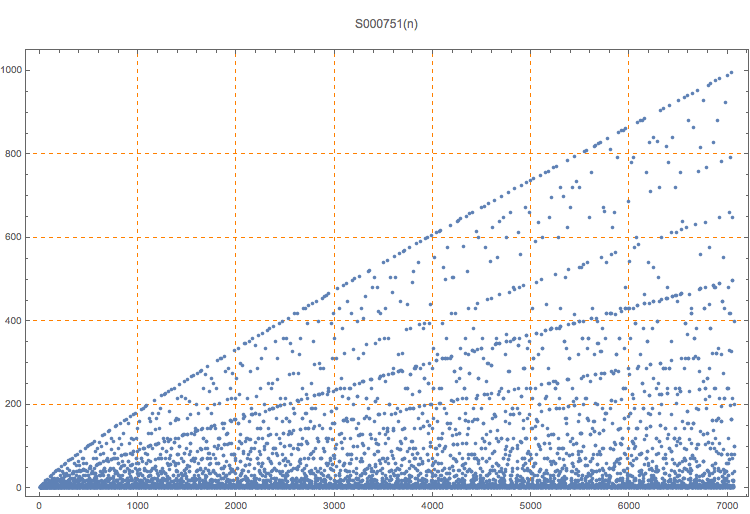For each n, the highest power in each factor in the factorization of x^n - 1, sorted.
1, 1, 1, 1, 2, 1, 1, 2, 1, 4, 1, 1, 2, 2, 1, 6, 1, 1, 2, 4, 1, 2, 6, 1, 1, 4, 4, 1, 10, 1, 1, 2, 2, 2, 4, 1, 12, 1, 1, 6, 6, 1, 2, 4, 8, 1, 1, 2, 4, 8, 1, 16, 1, 1, 2, 2, 6, 6, 1, 18, 1, 1, 2, 4, 4, 8, 1, 2, 6, 12, 1, 1, 10, 10, 1, 22, 1, 1, 2, 2, 2, 4, 4, 8, 1, 4, 20
1
This sequence starts the same as A102190. The first difference occurs in the row for n=30. This sequence does not appear in the Pomerance et al paper, but it is related.
T. D. Noe, Plot of 1000 rows
T. D. Noe, Table of 1000 rows
Example: Because x^6-1 = (x-1)(x+1)(x^2+x+1)(x^2-x+1), the sixth row is 1, 1, 2, 2.
Carl Pomerance, Lola Thompson, and Andreas Weingartner, On integers n for which X^n−1 has a divisor of every degree, arXiv 1511.03357 (Nov 11 2015)
(Mma) Table[Length /@ CoefficientList[Transpose[Rest[FactorList[x^pwr - 1]]][[1]], x] - 1, {pwr, 25}]
nonn,tabf
T. D. Noe, Nov 16 2015
